Personal protective equipment for preventing highly infectious diseases due to exposure to contaminated body fluids in healthcare staff
- PMID: 32293717
- PMCID: PMC7158881
- DOI: 10.1002/14651858.CD011621.pub4
Personal protective equipment for preventing highly infectious diseases due to exposure to contaminated body fluids in healthcare staff
Update in
-
Personal protective equipment for preventing highly infectious diseases due to exposure to contaminated body fluids in healthcare staff.Cochrane Database Syst Rev. 2020 May 15;5(5):CD011621. doi: 10.1002/14651858.CD011621.pub5. Cochrane Database Syst Rev. 2020. PMID: 32412096 Free PMC article.
Abstract
Background: In epidemics of highly infectious diseases, such as Ebola, severe acute respiratory syndrome (SARS), or coronavirus (COVID-19), healthcare workers (HCW) are at much greater risk of infection than the general population, due to their contact with patients' contaminated body fluids. Personal protective equipment (PPE) can reduce the risk by covering exposed body parts. It is unclear which type of PPE protects best, what is the best way to put PPE on (i.e. donning) or to remove PPE (i.e. doffing), and how to train HCWs to use PPE as instructed.
Objectives: To evaluate which type of full-body PPE and which method of donning or doffing PPE have the least risk of contamination or infection for HCW, and which training methods increase compliance with PPE protocols.
Search methods: We searched CENTRAL, MEDLINE, Embase and CINAHL to 20 March 2020.
Selection criteria: We included all controlled studies that evaluated the effect of full-body PPE used by HCW exposed to highly infectious diseases, on the risk of infection, contamination, or noncompliance with protocols. We also included studies that compared the effect of various ways of donning or doffing PPE, and the effects of training on the same outcomes.
Data collection and analysis: Two review authors independently selected studies, extracted data and assessed the risk of bias in included trials. We conducted random-effects meta-analyses were appropriate.
Main results: Earlier versions of this review were published in 2016 and 2019. In this update, we included 24 studies with 2278 participants, of which 14 were randomised controlled trials (RCT), one was a quasi-RCT and nine had a non-randomised design. Eight studies compared types of PPE. Six studies evaluated adapted PPE. Eight studies compared donning and doffing processes and three studies evaluated types of training. Eighteen studies used simulated exposure with fluorescent markers or harmless microbes. In simulation studies, median contamination rates were 25% for the intervention and 67% for the control groups. Evidence for all outcomes is of very low certainty unless otherwise stated because it is based on one or two studies, the indirectness of the evidence in simulation studies and because of risk of bias. Types of PPE The use of a powered, air-purifying respirator with coverall may protect against the risk of contamination better than a N95 mask and gown (risk ratio (RR) 0.27, 95% confidence interval (CI) 0.17 to 0.43) but was more difficult to don (non-compliance: RR 7.5, 95% CI 1.81 to 31.1). In one RCT (59 participants), people with a long gown had less contamination than those with a coverall, and coveralls were more difficult to doff (low-certainty evidence). Gowns may protect better against contamination than aprons (small patches: mean difference (MD) -10.28, 95% CI -14.77 to -5.79). PPE made of more breathable material may lead to a similar number of spots on the trunk (MD 1.60, 95% CI -0.15 to 3.35) compared to more water-repellent material but may have greater user satisfaction (MD -0.46, 95% CI -0.84 to -0.08, scale of 1 to 5). Modified PPE versus standard PPE The following modifications to PPE design may lead to less contamination compared to standard PPE: sealed gown and glove combination (RR 0.27, 95% CI 0.09 to 0.78), a better fitting gown around the neck, wrists and hands (RR 0.08, 95% CI 0.01 to 0.55), a better cover of the gown-wrist interface (RR 0.45, 95% CI 0.26 to 0.78, low-certainty evidence), added tabs to grab to facilitate doffing of masks (RR 0.33, 95% CI 0.14 to 0.80) or gloves (RR 0.22, 95% CI 0.15 to 0.31). Donning and doffing Using Centers for Disease Control and Prevention (CDC) recommendations for doffing may lead to less contamination compared to no guidance (small patches: MD -5.44, 95% CI -7.43 to -3.45). One-step removal of gloves and gown may lead to less bacterial contamination (RR 0.20, 95% CI 0.05 to 0.77) but not to less fluorescent contamination (RR 0.98, 95% CI 0.75 to 1.28) than separate removal. Double-gloving may lead to less viral or bacterial contamination compared to single gloving (RR 0.34, 95% CI 0.17 to 0.66) but not to less fluorescent contamination (RR 0.98, 95% CI 0.75 to 1.28). Additional spoken instruction may lead to fewer errors in doffing (MD -0.9, 95% CI -1.4 to -0.4) and to fewer contamination spots (MD -5, 95% CI -8.08 to -1.92). Extra sanitation of gloves before doffing with quaternary ammonium or bleach may decrease contamination, but not alcohol-based hand rub. Training The use of additional computer simulation may lead to fewer errors in doffing (MD -1.2, 95% CI -1.6 to -0.7). A video lecture on donning PPE may lead to better skills scores (MD 30.70, 95% CI 20.14 to 41.26) than a traditional lecture. Face-to-face instruction may reduce noncompliance with doffing guidance more (odds ratio 0.45, 95% CI 0.21 to 0.98) than providing folders or videos only.
Authors' conclusions: We found low- to very low-certainty evidence that covering more parts of the body leads to better protection but usually comes at the cost of more difficult donning or doffing and less user comfort, and may therefore even lead to more contamination. More breathable types of PPE may lead to similar contamination but may have greater user satisfaction. Modifications to PPE design, such as tabs to grab, may decrease the risk of contamination. For donning and doffing procedures, following CDC doffing guidance, a one-step glove and gown removal, double-gloving, spoken instructions during doffing, and using glove disinfection may reduce contamination and increase compliance. Face-to-face training in PPE use may reduce errors more than folder-based training. We still need RCTs of training with long-term follow-up. We need simulation studies with more participants to find out which combinations of PPE and which doffing procedure protects best. Consensus on simulation of exposure and assessment of outcome is urgently needed. We also need more real-life evidence. Therefore, the use of PPE of HCW exposed to highly infectious diseases should be registered and the HCW should be prospectively followed for their risk of infection.
Copyright © 2020 The Cochrane Collaboration. Published by John Wiley & Sons, Ltd.
Conflict of interest statement
Jos Verbeek: none known
Blair Rajamaki: none known
Sharea Ijaz: none known
Christina Mischke: none known
Jani Ruotsalainen: none known
F Selcen Kilinc Balci: none known
Riitta Sauni: none known
Bronagh Blackwood: none known
Elaine Toomley: none known
Figures
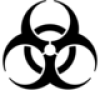







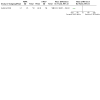
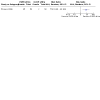

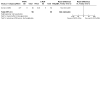
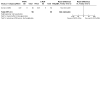












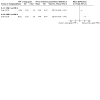







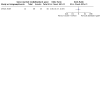
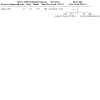



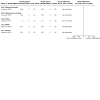
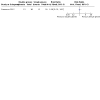
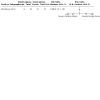





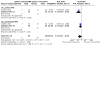




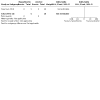
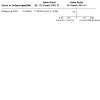


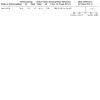
Update of
-
Personal protective equipment for preventing highly infectious diseases due to exposure to contaminated body fluids in healthcare staff.Cochrane Database Syst Rev. 2019 Jul 1;7(7):CD011621. doi: 10.1002/14651858.CD011621.pub3. Cochrane Database Syst Rev. 2019. Update in: Cochrane Database Syst Rev. 2020 Apr 15;4:CD011621. doi: 10.1002/14651858.CD011621.pub4. PMID: 31259389 Free PMC article. Updated.
Comment in
-
Use of personal protective equipment reduces the risk of contamination by highly infectious diseases such as COVID-19.Evid Based Nurs. 2021 Apr;24(2):41. doi: 10.1136/ebnurs-2020-103304. Epub 2020 Aug 11. Evid Based Nurs. 2021. PMID: 32788168 No abstract available.
References
References to studies included in this review
Andonian 2019 {published data only}
-
- Andonian J, Kazi S, Therkorn J, Benishek L, Billman C, Schiffhauer M, et al. Effect of an intervention package and teamwork training to prevent healthcare personnel self-contamination during personal protective equipment doffing. Clinical Infectious Diseases 2019; 69 Suppl 3:S248-S255. [DOI: ] - PMC - PubMed
Bell 2015 {published data only}
Buianov 2004 {published data only}
-
- Buianov VV, Kolesnikov NV, Malyshev NA, Suprun IP. Use of new individual protection substances in Mel'tser boxes. Vestnik Rossiiskoi Akademii Meditsinskikh Nauk / Rossiiskaia Akademiia Meditsinskikh Nauk 2004; 1:30-5. - PubMed
Casalino 2015 {published data only}
-
- Casalino E, Astocondor E, Sanchez JC, Diaz-Santana DE, Del Aquila C, Carrillo JP. Personal protective equipment for the Ebola virus disease: a comparison of 2 training programs. American Journal of Infection Control 2015; 43(12):1281-7. - PubMed
Casanova 2012 {published data only}
Casanova 2016 {published data only}
-
- Casanova LM, Teal LJ, Sickbert-Bennett EE, Anderson DJ, Sexton DJ, Rutala WA, et al. Assessment of self-contamination during removal of personal protective equipment for Ebola patient care. Infection Control and Hospital Epidemiology Oct 2016;37(10):1156-61. - PubMed
Chughtai 2018 {published data only}
Curtis 2018 {published data only}
-
- Curtis HA, Trang K, Chason KW, Biddinger PD. Video-based learning vs traditional lecture for instructing emergency medicine residents in disaster medicine principles of mass triage, decontamination, and personal protective equipment. Prehospital and Disaster Medicine 2018; 33(1):7-12. - PubMed
Drews 2019 {published data only}
Gleser 2018 {published data only}
-
- Gleser M, Schwab F, Solbach P, Vonberg RP. Modified gloves: a chance for the prevention of nosocomial infections. American Journal of Infection Control 2018; 46(3):266-9. - PubMed
Guo 2014 {published data only}
Hajar 2019 {published data only}
-
- Hajar Z, Mana TS, Tomas ME, Alhmidi H, Wilson BM, Donskey CJ. A crossover trial comparing contamination of healthcare personnel during removal of a standard gown versus a modified gown with increased skin coverage at the hands and wrists. Infection Control and Hospital Epidemiology 2019; 40(11):1278-80. [DOI: 10.1017/ice.2019.211] - DOI - PubMed
Hall 2018 {published data only}
-
- Hall S, Poller B, Bailey C, Gregory S, Clark R, Roberts P, et al. Use of ultraviolet-fluorescence-based simulation in evaluation of personal protective equipment worn for first assessment and care of a patient with suspected high-consequence infectious disease. Journal of Hospital Infection 2018; 99(2):218-28. - PubMed
Houlihan 2017 {published data only}
Hung 2015 {published data only}
-
- Hung PP, Choi KS, Chiang VC. Using interactive computer simulation for teaching the proper use of personal protective equipment. CIN: Computers, Informatics, Nursing 2015; 33(2):49-57. - PubMed
Kpadeh Rogers 2019 {published data only}
-
- Robinson G, Kpadeh ZZ, Alserehi H, Morgan D, Harris AD, Johnson JK, et al. Effect of glove disinfection on bacterial contamination of healthcare worker hands. Open Forum Infectious Diseases 2018; 5 Suppl 1:S56.
Mana 2018 {published data only}
-
- Mana TS, Tomas ME, Cadnum JL, Jencson AL, Piedrahita CT, Donskey CJ. A randomized trial of two cover gowns comparing contamination of healthcare personnel during removal of personal protective equipment. Infection Control and Hospital Epidemiology 2018; 39(1):97-100. - PubMed
Osei‐Bonsu 2019 {published data only}
-
- NCT03192553. Alternative doffing strategies to prevent healthcare worker self-contamination when using personal protective equipment (PPE). NCT03192553 2017.
-
- Osei-Bonsu K, Masroor N, Cooper K, Doern C, Jefferson KK, Major Y, et al. Alternative doffing strategies of personal protective equipment to prevent self-contamination in the health care setting. American Journal of Infection Control 2019; 47(5):534-9. [PMID: ] - PubMed
Shigayeva 2007 {published data only}
-
- Shigayeva A, Green K, Raboud JM, Henry B, Simor AE, Vearncombe M, et al. Factors associated with critical-care healthcare workers' adherence to recommended barrier precautions during the Toronto severe acute respiratory syndrome outbreak. Infection Control 2007; 28(11):1275-83. - PubMed
Strauch 2016 {published data only}
-
- Strauch AL, Brady TM, Niezgoda G, Almaguer CM, Shaffer RE, Fisher EM. Assessing the efficacy of tabs on filtering facepiece respirator straps to increase proper doffing techniques while reducing contact transmission of pathogens. Journal of Occupational and Environmental Hygiene 2016; 13(10):794-801. - PMC - PubMed
Suen 2018 {published data only}
Tomas 2016 {published data only}
-
- Tomas ME, Cadnum JL, Mana TS, Jencson AL, Donskey CJ. Seamless suits: reducing personnel contamination through improved personal protective equipment design. Infection Control and Hospital Epidemiology 2016; 37(6):742-4. - PubMed
Wong 2004 {published data only}
References to studies excluded from this review
Abrahamson 2006 {published data only}
Abualenain 2018 {published data only}
-
- Abualenain JT, Al-Alawi MM. Simulation-based training in Ebola personal protective equipment for healthcare workers: experience from King Abdulaziz University Hospital in Saudi Arabia. Journal of Infection and Public Health 2018; 11(6):796-800. [DOI: ] - PubMed
Alraddadi 2016 {published data only}
Anderson 2017 {published data only}
-
- Anderson DJ, Addison R, Lokhnygina Y, Warren B, Sharma-Kuinkel B, Rojas LJ, et al, CDC Prevention Epicenters Program. The Antimicrobial Scrub Contamination and Transmission (ASCOT) Trial: a three-arm, blinded, randomized controlled trial with crossover design to determine the efficacy of antimicrobial-impregnated scrubs in preventing healthcare provider contamination. Infection Control and Hospital Epidemiology 2017; 38(10):1147-54. [DOI: ] - PubMed
Beam 2011 {published data only}
Beam 2014 {published data only}
-
- Beam EL, Gibbs SG, Hewlett AL, Iwen PC, Nuss SL, Smith PW. Method for investigating nursing behaviors related to isolation care. American Journal of Infection Control 2014; 42(11):1152-6. - PubMed
Beam 2016a {published data only}
-
- Beam EL, Schwedhelm S, Boulter K, Kratochvil C, Lowe J, Hewlett A, et al. Personal protective equipment processes and rationale for the Nebraska Biocontainment Unit during the 2014 activations for Ebola virus disease. American Journal of Infection Control 2016; 44(3):340-2. - PubMed
Beam 2016b {published data only}
Bearman 2007 {published data only}
-
- Bearman GM, Marra AR, Sessler CN, Smith WR, Rosato A, Laplante JK, et al. A controlled trial of universal gloving versus contact precautions for preventing the transmission of multidrug-resistant organisms. American Journal of Infection Control 2007; 35(10):650-5. - PubMed
Bischoff 2019 {published data only}
Borchert 2007 {published data only}
-
- Borchert M, Mulangu S, Lefevre P, Tshomba A, Libande ML, Kulidri A, et al. Use of protective gear and the occurrence of occupational Marburg hemorrhagic fever in health workers from Watsa health zone, Democratic Republic of the Congo. Journal of Infectious Diseases 2007; 196 Suppl 2:S168-75. - PubMed
Bosc 2016 {published data only}
-
- Bosc J, Sanchez O, Carrie C, Revel P, Tentillier E, Biais M, et al. Impact of the personal protective equipment for Ebola virus disease on vascular access skills and the performance of airway: a manikin study. Annales Francaises de Medecine d'Urgence 2016; 6(3):172-8.
Buianov 1991 {published data only}
-
- Buianov VV, Elkin EN, Kolmykov VG, Kaplunov IuV, Malyshev NA, Kelli EI, et al. Use of personal protective equipment by pathologists and legal physicians working with particularly dangerous infectious diseases. Arkhiv Patologii 1991; 53(3):59-61. - PubMed
Butt 2016 {published data only}
-
- Butt TS, Koutlakis-Barron I, AlJumaah S, Al Thawadi S, Al Mofada S. Infection control and prevention practices implemented to reduce transmission risk of Middle East respiratory syndrome-coronavirus in a tertiary care institution in Saudi Arabia. American Journal of Infection Control 2016; 44(5):605-11. - PMC - PubMed
Casanova 2008 {published data only}
Casanova 2018 {published data only}
-
- Casanova LM, Erukunuakpor K, Kraft CS, Mumma JM, Durso FT, Ferguson AN, et al, Centers for Disease Control and Prevention Epicenters Program, Division of Healthcare Quality Promotion. Assessing viral transfer during doffing of Ebola-level personal protective equipment in a biocontainment unit. Clinical Infectious Diseases 2018; 66(6):945-9. [DOI: ] - PMC - PubMed
Castle 2009 {published data only}
-
- Castle N, Owen R, Hann M, Clark S, Reeves D, Gurney I. Impact of chemical, biological, radiation, and nuclear personal protective equipment on the performance of low- and high-dexterity airway and vascular access skills. Resuscitation 2009; 80(11):1290-5. - PubMed
Chandramohan 2018 {published data only}
-
- Chandramohan S, Krishna A, Navalkele B, Virdi P, Gill A, Javed I, et al. "All eyes on you": a covert observational study on contact precaution compliance in six hospitals at the Detroit Medical Center. Open Forum Infectious Diseases 2018; 5 Suppl 1:S173-S174. [DOI: ]
Christian 2004 {published data only}
Chughtai 2013 {published data only}
Clay 2015 {published data only}
-
- Clay KA, O'Shea MK, Fletcher T, Moore AJ, Burns DS, Craig D, et al. Use of an ultraviolet tracer in simulation training for the clinical management of Ebola virus disease. Journal of Hospital Infection 2015; 91(3):275-7. [PMID: ] - PubMed
Coates 2000 {published data only}
Coca 2015 {published data only}
-
- Coca A, DiLeo T, Kim JH, Roberge R, Shaffer R. Baseline evaluation with a sweating thermal manikin of personal protective ensembles recommended for use in West Africa. Disaster Medicine and Public Health Preparedness 2015; 9(5):536-42. [PMID: ] - PubMed
Coca 2017 {published data only}
Colebunders 2004 {published data only}
-
- Colebunders R, Sleurs H, Pirard P, Borchert M, Libande M, Mustin JP, et al. Organisation of health care during an outbreak of Marburg haemorrhagic fever in the Democratic Republic of Congo, 1999. Journal of Infection 2004; 48(4):347-53. - PubMed
Cooper 2005 {published data only}
-
- Cooper DM, Charles D, Durnell AJ, Anderson JM, Kern T, Self T. Assessment of personal protective equipment used for facial mucocutaneous exposure protection in nonhuman primate areas. Lab Animal 2005; 34(5):49-53. [PMID: ] - PubMed
Delaney 2016 {published data only}
-
- Delaney HM, Lucero PF, Maves RC, Lawler JV, Maddry JK, Biever KA, et al. Ebola virus disease simulation case series: Patient with Ebola virus disease in the prodromal phase of illness (scenario 1), the "wet" gastrointestinal phase of illness (scenario 2), and the late, critically ill phase of disease (scenario 3). Simulation in Healthcare 2016; 11(2):106-16. - PubMed
Doll 2017a {published data only}
-
- Doll M, Feldman M, Hartigan S, Sanogo K, Stevens M, McReynolds M, et al. Acceptability and necessity of training for optimal personal protective equipment use. Infection Control and Hospital Epidemiology 2017; 38(2):226-9. - PubMed
Doll 2017b {published data only}
-
- Doll M, Feldman M, Hartigan S, Sanogo K, Stevens M, McReynolds M, et al. Acceptability and necessity of training for optimal personal protective equipment use. Infection Control and Hospital Epidemiology 2017; 38(2):226-9. [DOI: ] - PubMed
Doshi 2016 {published data only}
-
- Doshi RH, Hoff NA, Mukadi P, Mwanza A, Mukadi D, Wasiswa J, et al. Seroprevalence of Ebola virus among health care workers in the Tshuapa district, Democratic Republic of the Congo. American Journal of Tropical Medicine and Hygiene 2016; 95(5):50.
Drew 2016 {published data only}
-
- Drew JL, Turner J, Mugele J, Hasty G, Duncan T, Zaiser R, et al. Beating the spread: developing a simulation analog for contagious body fluids. Simulation in Healthcare 2016; 11(2):100-5. - PubMed
DuBose 2018 {published data only}
-
- DuBose JR, Matic Z, Sala MF, Mumma JM, Kraft CS, Casanova LM, et al, CDC Prevention Epicenters Program. Design strategies to improve healthcare worker safety in biocontainment units: learning from Ebola preparedness. Infection Control and Hospital Epidemiology 2018; 39(8):961-7. [DOI: ] - PubMed
Dunn 2015 {published data only}
-
- Dunn AC, Walker TA, Redd J, Sugerman D, McFadden J, Singh T, et al. Nosocomial transmission of Ebola virus disease on pediatric and maternity wards: Bombali and Tonkolili, Sierra Leone, 2014. American Journal of Infection Control 2015; 44(3):269-72. [DOI: 10.1016/j.ajic.2015.09.016] [PMID: ] - DOI - PubMed
Elcin 2016 {published data only}
-
- Elcin M, Onan A, Odabasi O, Saylam M, Ilhan H, Daylan Kockaya P, et al. Developing a simulation-based training program for the prehospital professionals and students on the management of Middle East respiratory syndrome. Simulation in Healthcare 2016; 11(6):394-403. - PubMed
Fischer 2015 {published data only}
Fogel 2017 {published data only}
-
- Fogel I, David O, Balik CH, Eisenkraft A, Poles L, Shental O, et al. The association between self-perceived proficiency of personal protective equipment and objective performance: An observational study during a bioterrorism simulation drill. American Journal of Infection Control 2017; 45(11):1238-42. - PMC - PubMed
Foote 2017 {published data only}
Franklin 2016 {published data only}
-
- Franklin SM. A comparison of personal protective standards: caring for patients with Ebola virus. Clinical Nurse Specialist CNS 2016; 30(2):E1-8. - PubMed
Garibaldi 2019 {published data only}
-
- Garibaldi BT, Ruparelia C, Shaw-Saliba K, Sauer LM, Maragakis LL, Glancey M, et al. A novel personal protective equipment coverall was rated higher than standard Ebola virus personal protective equipment in terms of comfort, mobility and perception of safety when tested by health care workers in Liberia and in a United States biocontainment unit. American Journal of Infection Control 2019; 47(3):298-304. [DOI: ] - PubMed
Gozel 2013 {published data only}
-
- Gozel MG, Dokmetas I, Oztop AY, Engin A, Elaldi N, Bakir M. Recommended precaution procedures protect healthcare workers from Crimean-Congo hemorrhagic fever virus. International Journal of Infectious Diseases 2013; 17(11):e1046-50. - PubMed
Grélot 2015 {published data only}
-
- Grélot L, Koulibaly F, Maugey N, Janvier F, Foissaud V, Aletti M, et al. Moderate thermal strain in healthcare workers wearing personal protective equipment during treatment and care activities in the context of the 2014 Ebola virus disease outbreak. Journal of Infectious Diseases 2015 Dec 9;212:1462-5. [PMID: ] - PubMed
Grélot 2016 {published data only}
-
- Grélot L, Koulibaly F, Maugey N, Janvier F, Foissaud V, Aletti M, et al. Moderate thermal strain in healthcare workers wearing personal protective equipment during treatment and care activities in the context of the 2014 Ebola virus disease outbreak. Journal of Infectious Diseases 2016; 213(9):1462-5. - PubMed
Hendler 2000 {published data only}
-
- Hendler I, Nahtomi O, Segal E, Perel A, Wiener M, Meyerovitch J. The effect of full protective gear on intubation performance by hospital medical personnel. Association of Military Surgeons of the United States 2000; 165(4):272-4. - PubMed
Herlihey 2016 {published data only}
-
- Herlihey TA, Gelmi S, Flewwelling CJ, Hall TN, Bañez C, Morita PP, et al. Personal protective equipment for infectious disease preparedness: a human factors evaluation. Infection Control and Hospital Epidemiology 2016; 37(9):1022-8. - PubMed
Herlihey 2017 {published data only}
-
- Herlihey TA, Gelmi S, Cafazzo JA, Hall TN. The impact of environmental design on doffing personal protective equipment in a healthcare environment: a formative human factors trial. Infection Control and Hospital Epidemiology 2017; 38(6):712-7. - PubMed
Hersi 2015 {published data only}
Ho 2003 {published data only}
-
- Ho AS, Sung JJ, Chan-Yeung M. An outbreak of severe acute respiratory syndrome among hospital workers in a community hospital in Hong Kong. Annals of Internal Medicine 2003; 139(7):564-7. - PubMed
Ho 2004 {published data only}
-
- Ho KY, Singh KS, Habib AG, Ong BK, Lim TK, Ooi EE, et al. Mild illness associated with severe acute respiratory syndrome coronavirus infection: lessons from a prospective seroepidemiologic study of health-care workers in a teaching hospital in Singapore. Journal of Infectious Diseases 2004; 189(4):642-7. - PMC - PubMed
Hon 2008 {published data only}
Hormbrey 1996 {published data only}
Huh 2020 {published data only}
Jacob 2018 {published data only}
-
- Jacob JT, Herwaldt LA, Durso FT, CDC Prevention Epicenters Program. Preventing healthcare-associated infections through human factors engineering. Current Opinion in Infectious Diseases 2018; 31(4):353-8. [DOI: ] - PubMed
Jaffe 2019 {published data only}
-
- Jaffe G, Moriber N. Use of a double gloving technique to decrease cross-contamination by anesthesia providers. AANA Journal 2019; 87(4):307-12. - PubMed
Jaques 2016 {published data only}
-
- Jaques PA, Gao P, Kilinc-Balci S, Portnoff L, Weible R, Horvatin M, et al. Evaluation of gowns and coveralls used by medical personnel working with Ebola patients against simulated bodily fluids using an Elbow Lean Test. Journal of Occupational and Environmental Hygiene 2016; 13(11):881-93. - PMC - PubMed
Jeffs 2007 {published data only}
-
- Jeffs B, Roddy P, Weatherill D, la Rosa O, Dorion C, Iscla M, et al. The Medecins Sans Frontieres intervention in the Marburg hemorrhagic fever epidemic, Uige, Angola, 2005. I. Lessons learned in the hospital. Journal of Infectious Diseases 2007; 196 Suppl 2:S154-61. - PubMed
Jinadatha 2015 {published data only}
-
- Jinadatha C, Simmons S, Dale C, Ganachari-Mallappa N, Villamaria FC, Goulding N, et al. Disinfecting personal protective equipment with pulsed xenon ultraviolet as a risk mitigation strategy for health care workers. American Journal of Infection Control 2015; 43(4):412-4. [PMID: ] - PubMed
Jones 2020 {published data only}
Kahveci 2019 {published data only}
Kang 2017 {published data only}
Kang 2017a {published data only}
-
- Kang J, O'Donnell J, Colaianne B, Bircher N, Ren D, Smith KJ. Use of personal protective equipment among health care personnel: results of clinical observations and simulations. American Journal of Infection Control 2017; 45(1):17-23. - PubMed
Kappes Ramirez 2018 {published data only}
-
- Kappes Ramirez MS. Influence of undergraduate nursing student teaching methods on learning standard precautions and transmission-based precautions: Experimental research.. Nurse Education Today 2018; 61(ned, 8511379):101-5. [DOI: ] - PubMed
Keane 1977 {published data only}
Kerstiens 1999 {published data only}
-
- Kerstiens B, Matthys F. Interventions to control virus transmission during an outbreak of Ebola hemorrhagic fever: experience from Kikwit, Democratic Republic of the Congo, 1995. Journal of Infectious Diseases 1999; 179 suppl 1:s263-7. - PubMed
Kilinc‐Balci 2015 {published data only}
-
- Kilinc-Balci FS, Nwoko J, Hillam T. Evaluation of the performance of isolation gowns. American Journal of Infection Control 2015; 43(6):S44.
Kilinc‐Balci 2016 {published data only}
Kim 2015 {published data only}
-
- Kim SG. Healthcare workers infected with Middle East respiratory syndrome coronavirus and infection control. Journal of the Korean Medical Association 2015; 58(7):647-54.
Ko 2004 {published data only}
-
- Ko PC, Chen WJ, Ma MH, Chiang WC, Su CP, Huang CH, et al. Emergency medical services utilization during an outbreak of severe acute respiratory syndrome (SARS) and the incidence of SARS-associated coronavirus infection among emergency medical technicians. Academic Emergency Medicine 2004; 11(9):903-11. - PMC - PubMed
Kogutt 2019 {published data only}
-
- Kogutt BK, Sheffield JS, Garibaldi BT. 680: Assessing effectiveness of PPE in a simulated SVD of a highly infectious disease patient. American Journal of Obstetrics and Gynecology 2019; 220(1 Suppl):S451. [DOI: ]
Kratz 2017 {published data only}
-
- Kratz T, Verbeek L. Discussion of two infection prevention and control training approaches to enhance biosafety in primary healthcare facilities during an outbreak of Ebola virus disease. Tropical Medicine and International Health 2017; 22:167.
Kwon 2016 {published data only}
-
- Kwon JH, Burnham C-AD, Reske K, Liang S, Hink T, Wallace M, et al. Healthcare worker self-contamination during standard and Ebola virus disease personal protective equipment doffing. Open Forum Infectious Diseases 2016; 3:Supplement 1. [DOI: ]
Kwon 2017 {published data only}
Lai 2005 {published data only}
-
- Lai TS, Keung Ng T, Seto WH, Yam L, Law KI, Chan J. Low prevalence of subclinical severe acute respiratory syndrome-associated coronavirus infection among hospital healthcare workers in Hong Kong. Scandinavian Journal of Infectious Diseases 2005; 37(6/7):500/3. - PubMed
Lai 2011 {published data only}
Lange 2005 {published data only}
Lau 2004 {published data only}
Le 2004 {published data only}
Lee 2017 {published data only}
-
- Lee MH, Meerbach A, Straub J, Neidhardt I, Gresser N, Gies S, et al. Which personal protective equipment to provide? Challenges during the Ebola outbreak and lessons learned. Tropical Medicine and International Health 2017; 22:29.
Lindsley 2012 {published data only}
Lindsley 2014 {published data only}
Liu 2009 {published data only}
-
- Liu W, Tang F, Fang LQ, Vlas SJ, Ma HJ, Zhou JP, et al. Risk factors for SARS infection among hospital healthcare workers in Beijing: a case control study. Tropical Medicine and International Health 2009; 14 Suppl 1:52-9.
Loeb 2004 {published data only}
Low 2005 {published data only}
-
- Low JG, Wilder-Smith A. Infectious respiratory illnesses and their impact on healthcare workers: a review. Annals of Academic Medicine Singapore 2005; 34(1):105-10. - PubMed
Lowe 2014 {published data only}
-
- Lowe JJ, Jelden KC, Schenarts PJ, Rupp LE, Hawes KJ, Tysor BM, et al. Considerations for safe EMS transport of patients infected with Ebola virus. Prehospital Emergency Care 2015; 19(2):179-83. - PubMed
Lu 2006 {published data only}
Lu 2020 {published data only}
Luo 2011 {published data only}
-
- Luo CH, Yang S, Wen CY, Syu MY, Lin KH, Chiu SH, et al. Fluorescent aerosol leakage quantification for protective clothing with an entropy-based image processor for industrial and medical workers. Journal of Aerosol Science 2011; 42(7):491-6.
Ma 2004 {published data only}
-
- Ma HJ, Wang HW, Fang LQ, Jiang JF, Wei MT, Liu W, et al. A case-control study on the risk factors of severe acute respiratory syndromes among health care workers. Zhonghua Liu Xing Bing Xue Za Zhi 2004; 25(9):741-4. - PubMed
Makovicka 2018 {published data only}
Malik 2006 {published data only}
Marklund 2002 {published data only}
-
- Marklund LA. Transporting patients with lethal contagious infections. International Journal of Trauma Nursing 2002; 8(2):51-3. - PubMed
Matanock 2014 {published data only}
McLaws 2016 {published data only}
-
- McLaws ML, Chughtai AA, Salmon S, MacIntyre CR. A highly precautionary doffing sequence for health care workers after caring for wet Ebola patients to further reduce occupational acquisition of Ebola. American Journal of Infection Control 2016; 44(7):740-4. - PubMed
Mehtar 2015 {published data only}
-
- Mehtar S, Hakizimana B, Infection Control Africa Network Education and Training Working Group. IPC training in Sierra Leone- ICAN's role in fighting Ebola. Antimicrobial Resistance and Infection Control 2015; 4 Suppl 1:12.
Minnich 2003 {published data only}
-
- Minnich G. A clean ride. Building EMS vehicles for easier cleaning & decontamination. JEMS : a Journal of Emergency Medical Services 2003; 28(5):104-15. - PubMed
Mollura 2015 {published data only}
Moore 2005 {published data only}
Morgan 2009 {published data only}
Mumma 2018 {published data only}
Mumma 2019 {published data only}
Muyembe‐Tamfum 1999 {published data only}
-
- Muyembe-Tamfum JJ, Kipasa M, Kiyungu C, Colebunders R. Ebola outbreak in Kikwit, Democratic Republic of the Congo: discovery and control measures. Journal of Infectious Diseases 1999; 179 Suppl 1:S259-62. - PubMed
Nikiforuk 2017 {published data only}
Nishiura 2005 {published data only}
-
- Nishiura H, Kuratsuji T, Quy T, Phi NC, Van Ban V, Ha LE, et al. Rapid awareness and transmission of severe acute respiratory syndrome in Hanoi French Hospital, Vietnam. American Journal of Tropical Medicine and Hygiene 2005; 73(1):17-25. - PubMed
Northington 2007 {published data only}
-
- Northington WE, Mahoney GM, Hahn ME, Suyama J, Hostler D. Training retention of level C personal protective equipment use by emergency medical services personnel. Academic Emergency Medicine 2007; 14(10):846-9. - PubMed
Novosad 2016 {published data only}
-
- Novosad S, Christensen BE, Staples EJ, Nakashima A, Christensen K, Atkinson A, et al. Evaluating healthcare workers for acquisition of Zika virus while providing critical care. Open Forum Infectious Diseases 2016; 3:Supplement 1. [DOI: ]
Nyenswah 2015 {published data only}
Ofner 2003 {published data only}
-
- Ofner M, Lem M, Sarwal S, Vearncombe M, Simor A. Cluster of severe acute respiratory syndrome cases among protected health care workers -Toronto, April 2003. Canada Communicable Disease Report 2003; 29(11):93-7. - PubMed
Ofner‐Agostini 2006 {published data only}
-
- Ofner-Agostini M, Gravel D, McDonald LC, Lem M, Sarwal S, McGeer A, et al. Cluster of cases of severe acute respiratory syndrome among Toronto healthcare workers after implementation of infection control precautions: a case series. Infection Control 2006; 27(5):473-8. - PubMed
Ogendo 2008 {published data only}
-
- Ogendo SW, Awori MN, Omondi MA, Mulatya EM, Mugo PW. Risk of conjunctival contamination from blood splashes during surgery at the Kenyatta National Hospital, Nairobi. East African Medical Journal 2008; 85(9):432-7. - PubMed
Ong 2013 {published data only}
Park 2004 {published data only}
Parveen 2018 {published data only}
-
- Parveen SN, Gurley ES, Sazzad HM, Sultana R, Saiful Islam M, Knust B, et al. Identifying acceptable and feasible infection control interventions for Nipah encephalitis outbreaks in Bangladesh. American Journal of Infection Control 2018; 46(6):S24.
Pei 2006 {published data only}
-
- Pei LY, Gao ZC, Yang Z, Wei DG, Wang SX, Ji JM, et al. Investigation of the influencing factors on severe acute respiratory syndrome among health care workers. Journal of Peking University (Health Sciences) 2006; 38(3):271-5. - PubMed
Phan 2018 {published data only}
Phrampus 2016 {published data only}
-
- Phrampus PE, O'Donnell JM, Farkas D, Abernethy D, Brownlee K, Dongilli T, et al. Rapid development and deployment of Ebola readiness training across an academic health system: the critical role of simulation education, consulting, and systems integration. Simulation in Healthcare 2016; 11(2):82-8. - PubMed
Porteous 2018 {published data only}
-
- Porteous GH, Bean HA, Woodward CM, Beecher RP, Bernstein JR, Wilkerson S, et al. A simulation study to evaluate improvements in anesthesia work environment contamination after implementation of an infection prevention bundle. Anesthesia and Analgesia 2018; 127(3):662-70. [DOI: ] - PubMed
Quinn 2018 {published data only}
-
- Quinn T, Kim JH, Seo Y, Coca A. Comparison of thermal manikin modeling and human subjects' response during use of cooling devices under personal protective ensembles in the heat. Prehospital and Disaster Medicine 2018; 33(4):1-9. - PubMed
Ragazzoni 2015 {published data only}
-
- Ragazzoni L, Ingrassia PL, Echeverri L, Maccapani F, Berryman L, Burkle FM, et al. Virtual reality simulation training for Ebola deployment. Disaster Medicine and Public Health Preparedness 2015; 9(5):543-6. [PMID: ] - PubMed
Ransjo 1979 {published data only}
Reynolds 2006 {published data only}
Rosenberg 2016 {published data only}
-
- Rosenberg K, Zolot JP. A simple intervention reduces contamination risk in health care personnel. American Journal of Nursing 2016; 116(1):64-5.
Russell 2015 {published data only}
-
- Russell CD, Young I, Leung V, Morris K. Healthcare workers' decision-making about transmission-based infection control precautions is improved by a guidance summary card. Journal of Hospital Infection 2015; 90(3):235-9. [PMID: ] - PubMed
Scales 2003 {published data only}
Schumacher 2010 {published data only}
-
- Schumacher J, Gray SA, Michel S, Alcock R, Brinker A. Respiratory protection during paediatric cardiopulmonary resuscitation. European Journal of Anaesthesiology 2011; 28:150.
Scott Taylor 2017 {published data only}
-
- Scott Taylor R, Pitzer M, Goldman G, Czysz A, Simunich T, Ashurst J. Comparison of intubation devices in level C personal protective equipment: a cadaveric study. American Journal of Emergency Medicine 2017; 36:922-5. - PubMed
Seto 2003 {published data only}
Shao 2015 {published data only}
-
- Shao X-P, Zhou Q, Ju J-T, Xin H-G, Chen J, Wan C-l, et al. Evaluation of anti-Ebola training system in the PLA Medical Team to Liberia and some suggestion. Academic Journal Of Second Military Medical University 2015; 36(8):822-7.
Sorensen 2008 {published data only}
-
- Sorensen P, Ejlertsen T, Aaen D, Poulsen K. Bacterial contamination of surgeons gloves during shunt insertion: a pilot study. British Journal of Neurosurgery 2008; 22(5):675-7. - PubMed
Su 2017 {published data only}
-
- Su YM, Phan L, Edomwande O, Weber R, Bleasdale SC, Brosseau LM, CDC Prevention Epicenters Program. Contact patterns during cleaning of vomitus: a simulation study. American Journal of Infection Control 2017; 45(12):1312-17. - PubMed
Suen 2017 {published data only}
-
- Suen LK, Yang L, Ho SS, Fung KH, Boost MV, Wu CS, et al. Reliability of N95 respirators for respiratory protection before, during, and after nursing procedures. American Journal of Infection Control 2017; 45(9):974-8. [DOI: ] - PubMed
Tartari 2015 {published data only}
-
- Tartari E, Falzon Parascandalo AR, Borg MA. Ensuring healthcare workers' safety in the management of Ebola virus disease: a novel competency assessment checklist for proper PPE use. Antimicrobial Resistance and Infection Control 2015; 4:Suppl 1.
Teleman 2004 {published data only}
Tomas 2015 {published data only}
-
- Tomas ME, Kundrapu S, Thota P, Sunkesula VC, Cadnum JL, Mana TS, et al. Contamination of health care personnel during removal of personal protective equipment. JAMA Internal Medicine 2015; 175(12):1904-10. [PMID: ] - PubMed
Tomas 2016a {published data only}
-
- Tomas ME, Cadnum JL, Mana TSC, Jencson AL, Koganti S, Alhmidi H. Utility of a novel reflective marker visualized by flash photography for assessment of personnel contamination during removal of personal protective equipment. Infection Control and Hospital Epidemiology 2016; 37(6):711-3. - PubMed
Torres 2015 {published data only}
-
- Torres M, Hansen KN, Jerrard D. Ebola: a review for emergency providers. Emergency Medicine Clinics of North America 2015; 33(2):e1-18. [PMID: ] - PubMed
Visnovsky 2019 {published data only}
Weber 2018 {published data only}
-
- Weber RT, Phan LT, Edomwande O, Fritzen-Pedicini CM, Bleasdale SC, Jones R. Environmental and personal protective equipment contamination during simulated healthcare activities. American Journal of Infection Control 2018; 46(6):S10-S11.
Weber 2019 {published data only}
-
- Weber RT, Phan LT, Fritzen-Pedicini C, Jones RM. Environmental and personal protective equipment contamination during simulated healthcare activities. Annals of Work Exposures and Health 2019; 63(7):784-96. [DOI: ] - PubMed
West 2014 {published data only}
-
- West K. Ebola outbreak 2014. Why we don't need moon suits. JEMS : a Journal of Emergency Medical Services 2014; 39(11):28-30. - PubMed
Williams 2019 {published data only}
-
- Williams VR, Leis JA, Trbovich P, Agnihotri T, Lee W, Joseph B, et al. Improving healthcare worker adherence to the use of transmission-based precautions through application of human factors design: a prospective multi-centre study. Journal of Hospital Infection 2019; 103(1):101-5. [DOI: ] - PubMed
Xi 2016 {published data only}
-
- Xi H, Cao J, Liu J, Li Z, Kong X, Wang Y, et al. Improving health care workers' protection against infection of Ebola hemorrhagic fever through video surveillance. American Journal of Infection Control 2016; 44(8):922-4. - PubMed
Yin 2004 {published data only}
-
- Yin WW, Gao LD, Lin WS, Gao LD, Lin WS, Du L, et al. Effectiveness of personal protective measures in prevention of nosocomial transmission of severe acute respiratory syndrome. Zhonghua Liu Xing Bing Xue Za Zhi 2004; 25(1):18-22. - PubMed
Yuan 2018 {published data only}
-
- Yuan S, Zhang Z-W, Li Z-L. Bacteriophage M13 may be used for the assessment of viral transfer during doffing of Ebola-level personal protective equipment. Infection Control and Hospital Epidemiology 2018; 39(6):762-3. [DOI: ] - PubMed
Zellmer 2015 {published data only}
Zhou 2003 {published data only}
-
- Zhou G, Qi Y, Li L. Investigation report on the SARS infection rate of the second medical team of Peking University First Hospital. Beijing Da Xue Xue Bao 2003; 35 Suppl:59-61. - PubMed
References to ongoing studies
ChiCTR2000029900 {published data only}
-
- Renmin Hospital of Wuhan University. Research for risks associated with novel coronavirus pneumonia (COVID-19) in the hospital workers and nosocomial prevention and control strategy. ChiCTR2000029900 2020.
ChiCTR2000030317 {published data only}
-
- West China Hospital of Sichuan University. A prospective randomized controlled trial for a self-made gastroscope isolation mask for preventing and controlling the novel coronavirus pneumonia (COVID-19) epidemic period. ChiCTR2000030317 2020.
ChiCTR2000030834 {published data only}
-
- Tongji Hospital Tongji Medical College Huazhong University of Science and Technology Wuhan China. Epidemiological characteristics and antibody levels of COVID-19 infection of pediatric medical staff working in quarantine area. ChiCTR2000030834 2020.
ChiCTR2000030895 {published data only}
-
- Tongji Hospital Tongji Medical College Huazhong University of Science and Technology Wuhan China. Retrospective and prospective study on nosocomial infection in stomatology department under the background of COVID-19. ChiCTR2000030895 2020.
Additional references
Adams 2020
-
- Adams JG, Walls RM. Supporting the health care workforce during the COVID-19 global epidemic. JAMA 2020; 323:doi: 10.1001/jama.2020.3972. [PMID: ] - PubMed
Agah 1987
-
- Agah R, Cherry JD, Garakian AJ, Chapin M. Respiratory Syncytial Virus (RSV) infection rate in personnel caring for children with RSV infections. Routine isolation procedure vs routine procedure supplemented by use of masks and goggles. American Journal of Diseases of Children (1960) 1987; 141(6):695-7. [PMID: ] - PubMed
ANSI/AAMI PB70 2012
-
- ANSI/AAMI. PB70: Liquid barrier performance and classification of protective apparel and drapes in health care facilities. Association for the Advancement of Medical Instrumentation 2012.
Australian NHMRC 2010
-
- Australian National Health and Medical Research Council. Australian guidelines for the prevention and control of infection in healthcare. www.nhmrc.gov.au/book/html-australian-guidelines-prevention-and-control-... (accessed 8 December 2014).
Brouqui 2009
Campbell 2001
-
- Campbell MK, Mollison J, Grimshaw JM. Cluster trials in implementation research: estimation of intracluster correlation coefficients and sample size. Statistics in Medicine 2001; 20(3):391-9. - PubMed
CDC 2014
-
- Centers for Disease Control and Prevention. Guidance on personal protective equipment to be used by healthcare workers during management of patients with Ebola virus disease in U.S. Hospitals, including procedures for putting on (donning) and removing (doffing). www.cdc.gov/vhf/ebola/hcp/procedures-for-ppe.html (accessed 8 December 2014).
CDC 2020a
-
- Centers for Disease Control and Prevention. Conventional capacity strategies: use isolation gown alternatives that offer equivalent or higher protection. www.cdc.gov/coronavirus/2019-ncov/hcp/ppe-strategy/isolation-gowns.html#... (accessed 31 March 2020).
CDC 2020b
-
- Centers for Disease Control and Prevention. Frequently asked questions about personal protective equipment. www.cdc.gov/coronavirus/2019-ncov/hcp/respirator-use-faq.html (accessed 2 April 2020).
CDC 2020c
-
- Centers for Disease Control and Prevention. Sequence for putting on personal protective equipment (PPE). www.cdc.gov/niosh/npptl/pdfs/PPE-Sequence-508.pdf (accessed 2 April 2020).
Chang 2020
Cheng 2016
-
- Cheng A, Kessler D, Mackinnon R, Chang TP, Nadkarni VM, Hunt EA, et al. Reporting guidelines for health care simulation research: extensions to the CONSORT and STROBE statements. Simulation in Healthcare 2016; 11(4):238-48. [PMID: ] - PubMed
Cherrie 2006
-
- Cherrie JW, Semple S, Christopher Y, Saleem A, Hughson GW, Philips A. How important is inadvertent ingestion of hazardous substances at work? Annals of Occupational Hygiene 2006; 50(7):693-704. [PMID: ] - PubMed
Coia 2013
Covidence [Computer program]
-
- Veritas Health Innovation Covidence Systematic Review Software. Melbourne, Australia: Veritas Health Innovation, 2016.Available at www.covidence.org.
De Iaco 2012
-
- De Iaco G, Puro V, Fusco FM, Schilling S, Maltezou HC, Brouqui P, et al. European network for highly infectious diseases working group. Personal protective equipment management and policies: European network for highly infectious diseases data from 48 isolation facilities in 16 European countries. Infection Control and Hospital Epidemiology 2012; 33(10):1008-16. - PubMed
Deeks 2017
-
- Deeks JJ, Higgins JP, Altman DG (editors) on behalf of the Cochrane Statistical Methods Group. Chapter 9: Analysing data and undertaking meta-analyses. In: Higgins JPT, Churchill R, Chandler J, Cumpston MS (editors), Cochrane Handbook for Systematic Reviews of Interventions version 5.2.0 (updated June 2017), Cochrane, 2017. Available from www.training.cochrane.org/handbook.
Ebola 2014
-
- Editorial. Ebola: protection of health workers on the front line. Lancet 2014; 384(9942):470. - PubMed
ECDC 2014
-
- European Center for Disease Prevention and Control. Safe use of personal protective equipment in the treatment of infectious diseases of high consequence. ECDC . [DOI: 10.2900/339505] [ISBN 978-92-9193-612-0] - DOI
EN 13795
-
- CEN (European Committee for Standardization). EN 13795-2 Surgical drapes, gowns, clean air suits used as medical devices for patients, clinical staff and equipment. CEN (European Committee for Standardization) 2005.
EN 14126
-
- CEN (European Committee for Standardization). CSN EN 14126 Protective clothing - Performance requirements and tests methods for protective clothing against infective agents. CEN (European Committee for Standardization) 2003.
EU 2010
-
- European Commission. Council Directive 2010/32/EU of 10 May 2010 implementing the Framework Agreement on prevention from sharp injuries in the hospital and healthcare sector concluded by HOSPEEM and EPSU. eur-lex.europa.eu/legal-content/EN/TXT/?uri=CELEX:32010L0032 (accessed 30 March 2015).
Fischer 2014
-
- Fischer WA 2nd, Hynes NA, Perl TM. Protecting health care workers from ebola: personal protective equipment is critical but is not enough. Annals of Internal Medicine 2014; 161(10):753-4. - PubMed
Forrester 2014
-
- Forrester JD, Hunter JC, Pillai SK, Arwady MA, Ayscue P, Matanock A, et al, Centers for Disease Control and Prevention (CDC). Cluster of Ebola cases among Liberian and U.S. health care workers in an Ebola treatment unit and adjacent hospital - Liberia, 2014. Morbidity and Mortality Weekly Report 2014; 63(41):925-9. - PMC - PubMed
Gershon 2009
-
- Gershon RR, Vandelinde N, Magda LA, Pearson JM, Werner A, Prezant D. Evaluation of a pandemic preparedness training intervention of emergency medical services personnel. Prehospital and Disaster Medicine 2009; 24(6):508-11. - PubMed
Giwa 2020
-
- Giwa AL, Desai A, Duca A. Novel 2019 coronavirus SARS-CoV-2 (COVID-19): an updated overview for emergency clinicians. Emergency Medicine Practice 2020; 22(5):1-28. [PMID: ] - PubMed
Gould 2010
GRADEpro GDT [Computer program]
-
- McMaster University (developed by Evidence Prime) GRADEpro GDT. Version accessed 20 March 2020. Hamilton (ON): McMaster University (developed by Evidence Prime).Available at gradepro.org.
Heptonstall 2010
-
- Heptonstall J, Cockcroft A. Occupational infections. In: Hunter's diseases of occupations. 10 edition. London UK: Hodder & Stoughton Ltd, 2010:729-744.
Higgins 2003
Higgins 2011
-
- Higgins JP, Deeks JJ, Altman DG (editors). Chapter 16: Special topics in statistics. In: Higgins JPT, Green S (editors). Cochrane Handbook for Systematic Reviews of Interventions. Version 5.1.0 (updated March 2011). The Cochrane Collaboration, 2011. Available from www.training.cochrane.org/handbook.
Higgins 2017
-
- Higgins JP, Altman DG, Sterne JA (editors). Chapter 8: Assessing risk of bias in included studies. In: Higgins JPT, Churchill R, Chandler J, Cumpston MS (editors), Cochrane Handbook for Systematic Reviews of Interventions version 5.2.0 (updated June 2017), Cochrane, 2017. Available from www.training.cochrane.org/handbook.
Howie 2005
ISO 2004a
-
- International Organization for Standardization (ISO). Clothing for protection against contact with blood and body fluids - Determination of resistance of protective clothing materials to penetration by blood-borne pathogens - Test method using Phi-X 174 bacteriophage ISO 166604:2004. International Organization for Standardization 2004.
ISO 2004b
-
- International Organization for Standardization (ISO). Clothing for protection against contact with blood and body fluids - Determination of the resistance of protective clothing materials to penetration by blood and body fluids - Test method using synthetic blood, ISO 16603:2004. International Organization for Standardization (ISO) 2004.
ISO 2013
-
- International Organization for Standardization (ISO). Protective clothing - Protection against chemicals - Determination of resistance of protective clothing materials to permeation by liquids and gases ISO 6529:2013. International Organization for Standardization (ISO) 2013.
Jefferson 2008
Jefferson 2011
Kahveci 2019
Kilmarx 2014
Kuklane 2015
Landers 2010
Levy 2015
Luong Thanh 2016
Makison 2014
Missair 2014
Moher 2009
Moon 2015
-
- Moon S, Sridhar D, Pate MA, Jha AK, Clinton C, Delaunay S, et al. Will Ebola change the game? Ten essential reforms before the next pandemic. The report of the Harvard-LSHTM independent panel on the global response to Ebola. Lancet 2015; 386:2204-21. [DOI: 10.1016/S0140-6736(15)00946-0] [PMID: ] - DOI - PMC - PubMed
Mäkelä 2014
-
- Mäkelä E, Mäkinen H. Protective clothing against chemical and biological hazards. oshwiki.eu/wiki/Protective_clothing_against_chemical_and_biological_haza... (accessed 12 November 2014).
NFPA 1999
-
- National Fire Protection Association. Standard on protective clothing for emergency medical operations. National Fire Protection Association 2013.
Nichol 2008
-
- Nichol K, Bigelow P, O'Brien-Pallas L, McGeer A, Manno M, Holness DL. The individual, environmental, and organizational factors that influence nurses' use of facial protection to prevent occupational transmission of communicable respiratory illness in acute care hospitals. American Journal of Infection Control 2008; 36(7):481-7. - PMC - PubMed
NIOSH 2014
-
- The National Institute for Occupational Safety and Health (NIOSH). Considerations for selecting protective clothing used in health care for protection against microorganisms in blood and body fluids. www.cdc.gov/niosh/npptl/topics/ProtectiveClothing/default.html (accessed 2 January 2015).
OSHA 2012
-
- Occupational Safety & Health Administration (OSHA). Bloodborne pathogens. 1910.1030(d)(3) Personal Protective Equipment; www.osha.gov/law-regs.html (accessed 10 December 2014).
Otter 2016
Peng 2020
Poller 2018
Remuzzi 2020
Review Manager 2014 [Computer program]
-
- Nordic Cochrane Centre, The Cochrane Collaboration Review Manager 5 (RevMan 5). Version 5.3. Copenhagen: Nordic Cochrane Centre, The Cochrane Collaboration, 2014.
RevMan Web 2019 [Computer program]
-
- The Cochrane Collaboration Review Manager Web (RevMan Web). The Cochrane Collaboration, 2019.Available at: revman.cochrane.org.
Roberge 2008a
Roberge 2008b
-
- Roberge RJ. Effect of surgical masks worn concurrently over N95 filtering face piece respirators: extended service life versus increased user burden. Journal of Public Health Management and Practice 2008; 14(2):E19-26. - PubMed
Roberge 2016
Schünemann 2017
-
- Schünemann HJ, Oxman AD, Vist GE, Higgins JP, Deeks JJ, Glasziou P, et al, on behalf of the Cochrane Applicability and Recommendations Methods Group. Chapter 12: Interpreting results and drawing conclusions. In: Higgins JPT, Churchill R, Chandler J, Cumpston MS (editors), Cochrane Handbook for Systematic Reviews of Interventions version 5.2.0 (updated June 2017). Cochrane, 2017. Available from www.training.cochrane.org/handbook.
Sepkowitz 2005
Siegel 2019
-
- Siegel JD, Rhinehart E, Jackson M, Chiarello L, Healthcare Infection Control Practices Advisory Committee. 2007 Guideline for isolation precautions: preventing transmission of infectious agents in healthcare settings. www.cdc.gov/infectioncontrol/guidelines/isolation/index.ht accessed 28 March 2020;(updated July 2019).
Sterne 2016
Verbeek 2016a
Wang 2020
Ward 2011
-
- Ward DJ. The role of education in the prevention and control of infection: a review of the literature. Nurse Education Today 2011; 31(1):9-17. - PubMed
WHO 2003
-
- World Health Organization (WHO). Summary of probable SARS cases with onset of illness from 1 November 2002 to 31 July 2003. www.who.int/csr/sars/country/table2004_04_21/en/ accessed 31 March 2020.
WHO 2006
-
- World Health Organization (WHO). Health workers: a global profile. World Health Organization (WHO), Geneva 2006.
WHO 2009
-
- World Health Organization (WHO). WHO guidelines on hand hygiene in health care: a summary. www.who.int/gpsc/5may/tools/who_guidelines-handhygiene_summary.pdf (accessed 8 December 2014).
WHO 2014
-
- World Health Organization (WHO). Infection prevention and control of epidemic- and pandemic-prone acute respiratory infections in health care; WHO guideline. World Health Organisation, Geneva, Switzerland 2014. - PubMed
WHO 2015a
-
- World Health Organization. Health worker Ebola infections in Guinea, Liberia and Sierra Leone. file:///C:/Users/jver/Desktop/Ebola%20update%202017/WHO_EVD_SDS_REPORT_2015.1_eng.pdf 2015:1-15.
WHO 2015b
-
- WHO regional office for Africa. Overview of Ebola virus disease epidemic in West Africa. WHO regional office for Africa Outbreak Bulletin 2015; 5(5):2-3.
WHO 2016
-
- World Health Organization. Personal protective equipment for use in a filovirus disease outbreak. Rapid advice guideline. WHO 2016:1-53. [ISBN 978 92 4 154972 1 ] - PubMed
WHO 2018
-
- WHO. Preferred product characteristics for personal protective equipment for the health worker on the frontline responding to viral hemorrhagic fevers in tropical climates. apps.who.int/medicinedocs/documents/s23448en/s23448en.pdf 2018:1-31. [ISBN 978-92-4-151415-6]
WHO 2020a
-
- World Health Organization (WHO). Rational use of personal protective equipment (PPE) for coronavirus disease (COVID-19). Interim Guidance issued 19 March 2020. apps.who.int/iris/bitstream/handle/10665/331498/WHO-2019-nCoV-IPCPPE_use... (accessed 30 March 2020).
WHO 2020b
-
- World Health Organization (WHO). Advice on the use of masks in the community, during home care, and in health care settings in the context of COVID-19. Interim Guidance 19 March 2020. World Health Organization, Geneva, Switzerland 2020.
Yassi 2005
-
- Yassi A, Moore D, Fitzgerald JM, Bigelow P, Hon CY, Bryce E, BC Interdisciplinary Respiratory Protection Study Group. Research gaps in protecting healthcare workers from SARS and other respiratory pathogens: an interdisciplinary, multi-stakeholder, evidence-based approach. Journal of Occupational and Environmental Medicine 2005; 47(1):41-50. - PMC - PubMed
References to other published versions of this review
Verbeek 2016b
-
- Verbeek JH, Ijaz S, Mischke C, Ruotsalainen JH, Mäkelä E, Neuvonen K, et al. Personal protective equipment for preventing highly infectious diseases due to exposure to contaminated body fluids in healthcare staff. Cochrane Database of Systematic Reviews 2016, Issue 4. [DOI: 10.1002/14651858.CD011621.pub2] - DOI - PMC - PubMed
Verbeek 2015
-
- Verbeek JH, Ijaz S, Mischke C, Ruotsalainen JH, Mäkelä E, Neuvonen K, et al. Personal protective equipment for preventing highly infectious diseases due to contact with contaminated body fluids in health care staff. Cochrane Database of Systematic Reviews 2015, Issue 4. [DOI: 10.1002/14651858.CD011621] - DOI - PMC - PubMed
Verbeek 2019
-
- Verbeek JH, Rajamaki B, Ijaz S, Mischke C, Ruotsalainen JH, Mäkelä E, et al. Personal protective equipment for preventing highly infectious diseases due to exposure to contaminated body fluids in healthcare staff. Cochrane Database of Systematic Reviews 2019, Issue 7. [DOI: 10.1002/14651858.CD011621.pub3] - DOI - PMC - PubMed
Publication types
MeSH terms
LinkOut - more resources
Full Text Sources
Medical
Miscellaneous

